Genetic Mechanism and Evolution of the Covert Fault Zone and Its Oil-Controlling Mode in Qikou Sag, Eastern China
Abstract
1. Introduction
2. Study Area
3. Methods
3.1. Establishment of Recognition Criteria
3.2. R Shear Model Based Genetic Mechanism Analysis
3.3. Mohr-Coulomb Theory Based Evolution Interpretation
4. Results and Discussion
4.1. Recognition Criteria of Covert Fault Zone in Qikou Sag
4.2. Genetic Mechanism of the Covert Fault Zone in Qikou Sag
4.3. Evolutionary Characteristic of the Covert Fault Zone in Qikou Sag
4.4. Oil-Controlling Mode of the Covert Fault Zone in Qikou Sag
5. Conclusions
Author Contributions
Funding
Conflicts of Interest
References
- Zhou, W.; Wang, W.; Shan, C.; Wang, G. Formation and evolution of concealed fault zone in sedimentary basin and its reservoir-controlling effect. Int. J. Oil Gas Coal Technol. 2016, 12, 335–358. [Google Scholar] [CrossRef]
- Xi, K.; Cao, Y.; Haile, B.G.; Zhu, R.; Jahren, J.; Bjørlykke, K.; Zhang, X.; Hellevang, H. How does the pore-throat size control the reservoir quality and oiliness of tight sandstones? The case of the lower cretaceous quantou formation in the Southern Songliao Basin, China. Mar. Petrol. Geol. 2016, 76. [Google Scholar] [CrossRef]
- Sun, T.; Lv, Y.; Liu, Z. Quantitative evaluation of control of faults on hydrocarbon accumulation and play fairway prediction: A case from Es3 (1) in Qijia-Yuanyanggou area, the Liaohe Depression. Oil Gas Geol. 2013, 34, 790–796. [Google Scholar] [CrossRef]
- Zhao, X.; Jin, F.; Cui, Z.; Han, C.; Zeng, J.; Wang, Q.; Guo, K. Types of subtle buried-hill oil reservoirs and their accumulation simulation in Jizhong Depression, Bohai Bay Basin. Petrol. Explor. Dev. 2012, 39, 147–154. [Google Scholar] [CrossRef]
- Lei, Q.; Yang, L.; Duan, Y.; Weng, D.; Wang, X.; Guan, B.; Wang, Z.; Guo, Y. The “fracture-controlled reserves” based stimulation technology for unconventional oil and gas reservoirs. Petrol. Explor. Dev. 2018. [CrossRef]
- Zheng, M.; Jia, C.; Feng, Z.; Li, X.; Qu, H.; Liang, Y. Potential replacement regions of hydrocarbon reserves in exploration domain of foreland basins. Acta Petrol. Sin. 2010, 5. [Google Scholar] [CrossRef]
- Rutqvist, J.; Rinaldi, A.P.; Cappa, F.; Moridis, G.J. Modeling of fault reactivation and induced seismicity during hydraulic fracturing of shale-gas reservoirs. J. Petrol. Sci. Eng. 2013, 107, 31–44. [Google Scholar] [CrossRef]
- Jia, B.; Tsau, J.-S.; Barati, R. A review of the current progress of CO2 injection eor and carbon storage in shale oil reservoirs. Fuel 2019, 236, 404–427. [Google Scholar] [CrossRef]
- Wang, Z.; Zhao, W.; Men, X.; Zheng, H.; Li, X. Control of basement fault minor-activity on gas pool formation of upper paleozoic, Ordos Basin. Petrol. Explor. Dev. 2005, 32, 9–13. [Google Scholar] [CrossRef]
- Morley, C.; Haranya, C.; Phoosongsee, W.; Pongwapee, S.; Kornsawan, A.; Wonganan, N. Activation of rift oblique and rift parallel pre-existing fabrics during extension and their effect on deformation style: Examples from the rifts of Thailand. J. Struct. Geol. 2004, 26, 1803–1829. [Google Scholar] [CrossRef]
- Di, L. Controlling of petrophysical fractures on extra-low permeability oil and gas reservoirs in Ordos Basin. Petrol. Explor. Dev. 2006, 33, 667–670. [Google Scholar] [CrossRef]
- Wang, W.; Zhou, W.; Zhou, J.; Li, S. Formation mechanism and distribution of buried fault zones in the Jinhu Sag. J. Jilin Univ. Earth Sci. Ed. 2014, 44, 1395–1405. [Google Scholar] [CrossRef]
- Morley, C. How successful are analogue models in addressing the influence of pre-existing fabrics on rift structure? J. Struct. Geol. 1999, 21, 1267–1274. [Google Scholar] [CrossRef]
- Dooley, T.P.; Schreurs, G. Analogue modelling of intraplate strike-slip tectonics: A review and new experimental results. Tectonophysics 2012, 574. [Google Scholar] [CrossRef]
- Mollema, P.; Antonellini, M. Compaction bands: A structural analog for anti-mode I cracks in aeolian sandstone. Tectonophysics 1996, 267, 209–228. [Google Scholar] [CrossRef]
- Bellahsen, N.; Daniel, J.M. Fault reactivation control on normal fault growth: An experimental study. J. Struct. Geol. 2005, 27, 769–780. [Google Scholar] [CrossRef]
- Hardy, S. Cover deformation above steep, basement normal faults: Insights from 2D discrete element modeling. Mar. Petrol. Geol. 2011, 28, 966–972. [Google Scholar] [CrossRef]
- Hardy, S. Propagation of blind normal faults to the surface in basaltic sequences: Insights from 2D discrete element modelling. Mar. Petrol. Geol. 2013, 48, 149–159. [Google Scholar] [CrossRef]
- Liu, C.; Gu, L.; Wang, J.; Si, S. Reservoir characteristics and forming controls of intrusive-metamorphic reservoir complex: A case study on the diabase-metamudstone rocks in the Gaoyou Sag, Eastern China. J. Petrol. Sci. Eng. 2019, 173, 705–714. [Google Scholar] [CrossRef]
- Pu, X.; Zhou, L.; Han, W.; Chen, C.; Yuan, X.; Lin, C.; Liu, S.; Han, G.; Zhang, W.; Jiang, W. Gravity flow sedimentation and tight oil exploration in lower first member of Shahejie Formation in slope area of Qikou Sag, Bohai Bay Basin. Petrol. Explor. Dev. 2014, 41, 153–164. [Google Scholar] [CrossRef]
- Chen, S.; Wang, H.; Wu, Y.; Huang, C.; Wang, J.; Xiang, X.; Ren, P. Stratigraphic architecture and vertical evolution of various types of structural slope breaks in Paleogene Qikou Sag, Bohai Bay Basin, Northeastern China. J. Petrol. Sci. Eng. 2014, 122, 567–584. [Google Scholar] [CrossRef]
- Zhao, X.; Pu, X.; Zhou, L.; Shi, Z.; Han, W.; Zhang, W. Geologic characteristics of deep water deposits and exploration discoveries in slope zones of fault lake basin: A case study of Paleogene Shahejie Formation in Banqiao-Qibei slope, Qikou Sag, Bohai Bay Basin. Petrol. Explor. Dev. 2017, 44, 171–182. [Google Scholar] [CrossRef]
- Zhou, L.; Fu, L.; Lou, D.; Lu, Y.; Feng, J.; Zhou, S.; Santosh, M.; Li, S. Structural anatomy and dynamics of evolution of the Qikou Sag, Bohai Bay Basin: Implications for the destruction of North China Craton. J. Asian Earth. Sci. 2012, 47, 94–106. [Google Scholar] [CrossRef]
- Pu, X.; Zhou, L.; Xiao, D.; Hua, S.; Chen, C.; Yuan, X.; Han, G.; Zhang, W. Lacustrine carbonates in the southwest margin of the Qikou Sag, Huanghua Depression, Bohai Bay Basin. Petrol. Explor. Dev. 2011, 38, 136–144. [Google Scholar] [CrossRef]
- Pu, X.; Zhou, L.; Wang, W.; Han, W.; Xiao, D.; Liu, H.; Chen, C.; Zhang, W.; Yuan, X.; Lu, Y.; et al. Medium-deep clastic reservoirs in the slope area of Qikou Sag, Huanghua Depression, Bohai Bay Basin. Petrol. Explor. Dev. 2013, 40, 38–51. [Google Scholar] [CrossRef]
- Yu, Z.; Liu, K.; Liu, L.; Qu, X.; Yu, M.; Zhao, S.; Ming, X. Characterization of paleogene hydrothermal events and their effects on reservoir properties in the Qikou Sag, Eastern China. J. Petrol. Sci. Eng. 2016, 146, 1226–1241. [Google Scholar] [CrossRef]
- Huang, C.; Wang, H.; Wu, Y.; Wang, J.; Chen, S.; Ren, P.; Liao, Y.; Zhao, S.E.; Xia, C. Genetic types and sequence stratigraphy models of palaeogene slope break belts in Qikou Sag, Huanghua Depression, Bohai Bay Basin, Eastern China. Sediment. Geol. 2012, 261, 65–75. [Google Scholar] [CrossRef]
- Qi, P.; Ren, J.; Shi, S. Features of the cenozoic structure of the coastal zone in Qikou Sag and its formation mechanism. Acta Petrol. Sin. 2010, 31, 900–905. [Google Scholar] [CrossRef]
- Zhou, L.; Lu, Y.; Xiao, D.; Zhang, Z.; Chen, X.; Wang, H.; Hu, S. Basinal texture structure of Qikou Sag in Bohai Bay Basin and its evolution. J. Nat. Gas Geosci. 2011, 22, 373–382. [Google Scholar] [CrossRef]
- Wu, Y.; Fu, J.; Zhou, J.; Xu, Y. Evaluation of hydrocarbon system in Qikou Sag. Acta Petrol. Sin. 2000, 6. [Google Scholar] [CrossRef]
- Fossen, H. Structural Geology, 2nd ed.; Cambridge University Press: Cambridge, UK, 2016; pp. 20–45. ISBN 978-1-107-05764-7. [Google Scholar]
- Zhang, H. New concept of petroleum system and its history genetic classification. J. Chengdu Univ. Technol. 1999, 1, 14–16. [Google Scholar] [CrossRef]
- Jackson, C.A.-L.; Rotevatn, A. 3D seismic analysis of the structure and evolution of a salt-influenced normal fault zone: A test of competing fault growth models. J. Struct. Geol. 2013, 54, 215–234. [Google Scholar] [CrossRef]
- Du, W.; Wu, Y.; Guan, Y.; Hao, M. Edge detection in potential filed using the correlation coefficients between the average and standard deviation of vertical derivatives. J. Appl. Geophys. 2017, 143, 231–238. [Google Scholar] [CrossRef]
- Duffy, O.B.; Bell, R.E.; Jackson, C.A.-L.; Gawthorpe, R.L.; Whipp, P.S. Fault growth and interactions in a multiphase rift fault network: Horda platform, Norwegian North Sea. J. Struct. Geol. 2015, 80, 99–119. [Google Scholar] [CrossRef]
- Mortimer, E.; Paton, D.; Scholz, C.; Strecker, M. Implications of structural inheritance in oblique rift zones for basin compartmentalization: Nkhata Basin, Malawi rift (EARS). Mar. Petrol. Geol. 2016, 72, 110–121. [Google Scholar] [CrossRef]
- Li, C.; Wang, S.; Wang, L. Tectonostratigraphic history of the Southern Tian Shan, Western China, from seismic reflection profiling. J. Asian Earth. Sci. 2018. [Google Scholar] [CrossRef]
- Renard, Y. A uniqueness criterion for the signorini problem with coulomb friction. SIAM J. Math. Anal. 2006, 38, 452–467. [Google Scholar] [CrossRef]
- Dieter, G.E.; Bacon, D.J. Mechanical Metallurgy, 3rd ed.; McGraw-Hill Education: New York, NY, USA, 1986; pp. 213–256. ISBN 978-0070168930. [Google Scholar]
- Labuz, J.F.; Zang, A. Mohr-coulomb failure criterion. Rock Mech. Rock Eng. 2012, 45, 975–979. [Google Scholar] [CrossRef]
- Parnell, J.; Watt, G.R.; Middleton, D.; Kelly, J.; Baron, M. Deformation band control on hydrocarbon migration. J. Sediment. Res. 2004, 74, 552–560. [Google Scholar] [CrossRef]
- Bonini, M. Passive roof thrusting and forelandward fold propagation in scaled brittle-ductile physical models of thrust wedges. J. Geophys. Res.-Solid Earth 2001, 106, 2291–2311. [Google Scholar] [CrossRef]
- Zhou, W.; Wang, W.; An, B.; Hu, Y.; Dong, M. Genetic types of potential fault zone and its significance on hydrocarbon accumulation. J. Nat. Gas Geosci. 2014, 25, 1727–1734. [Google Scholar] [CrossRef]
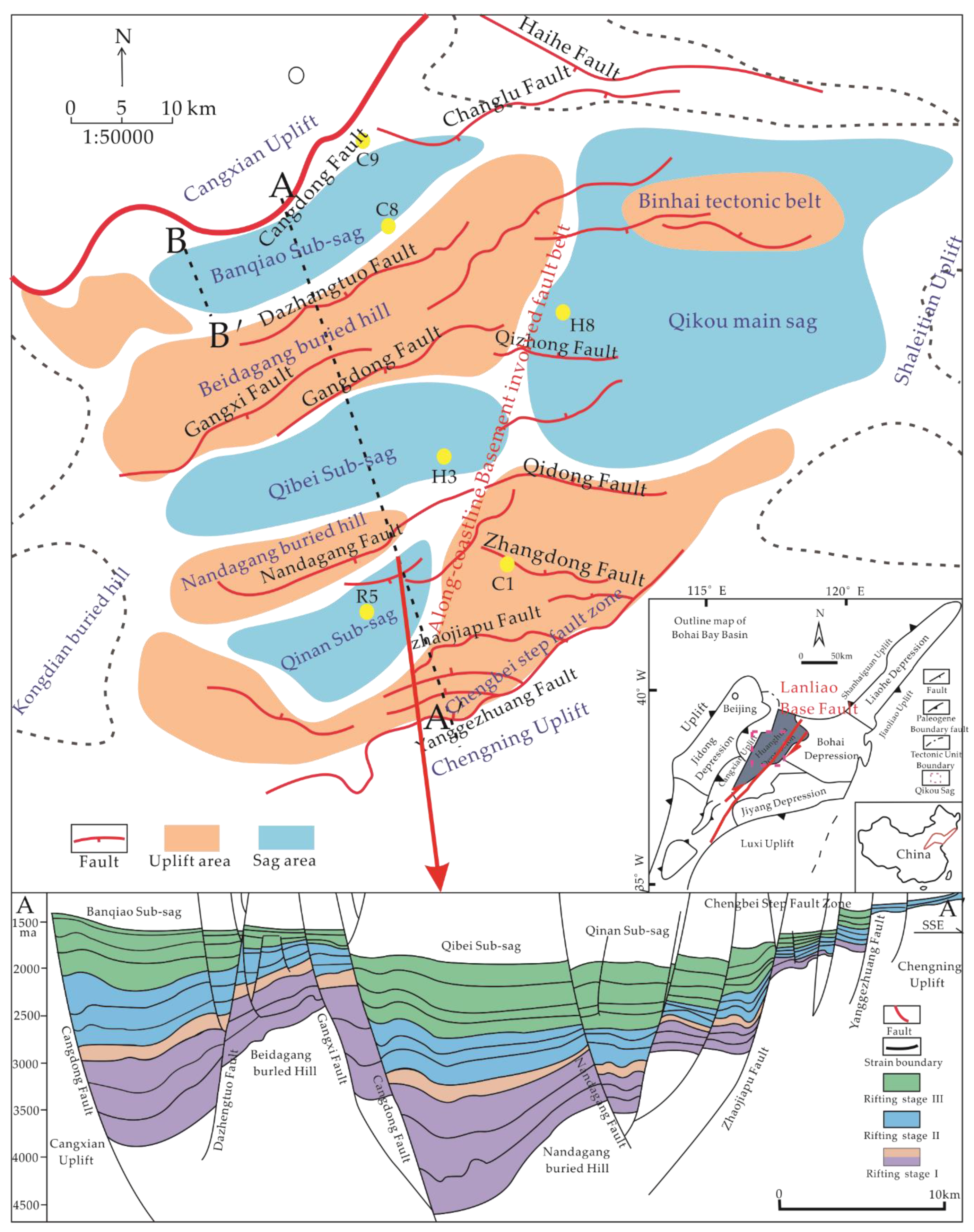



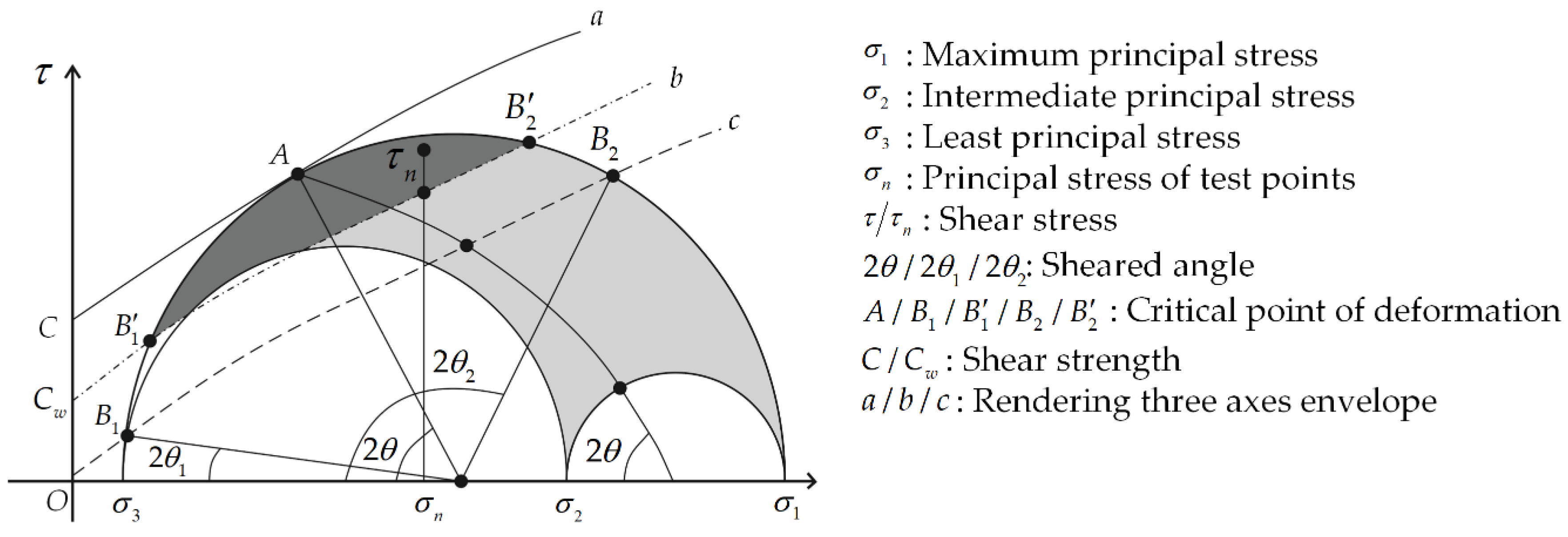
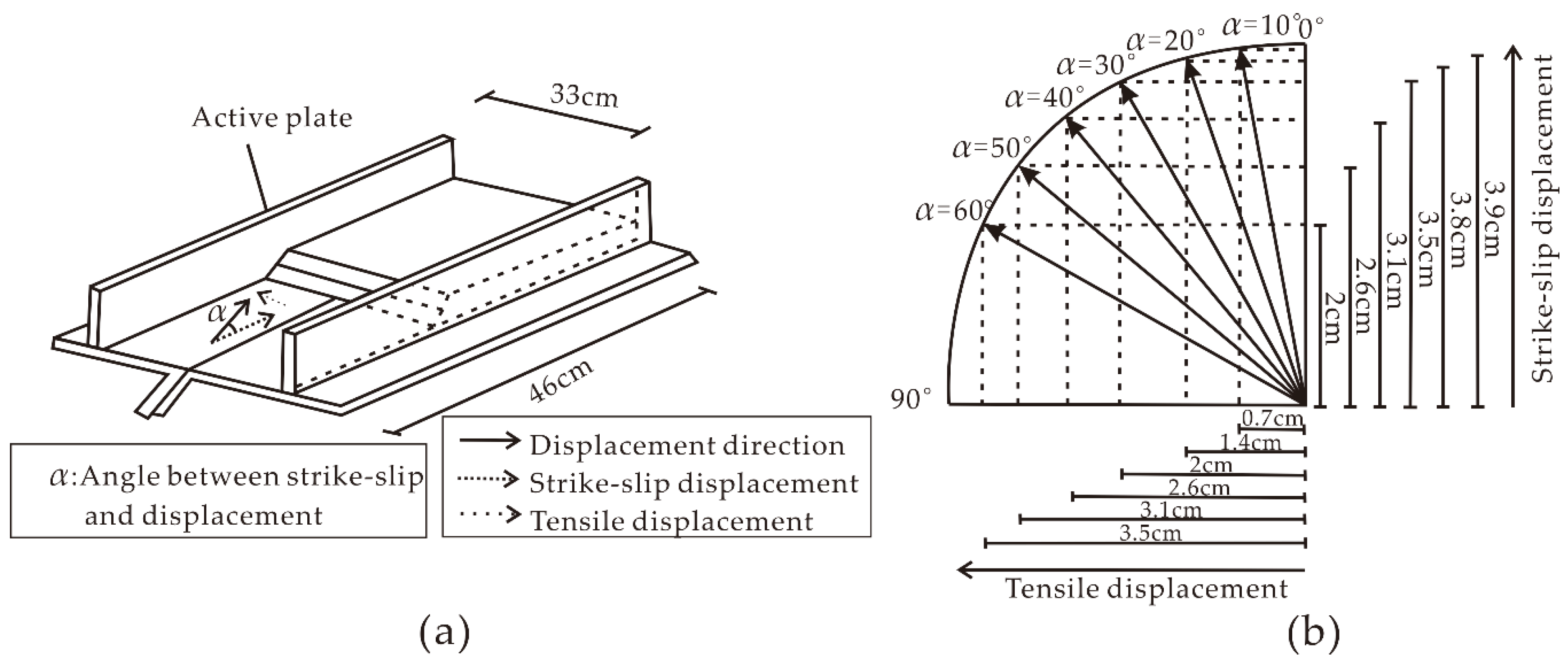
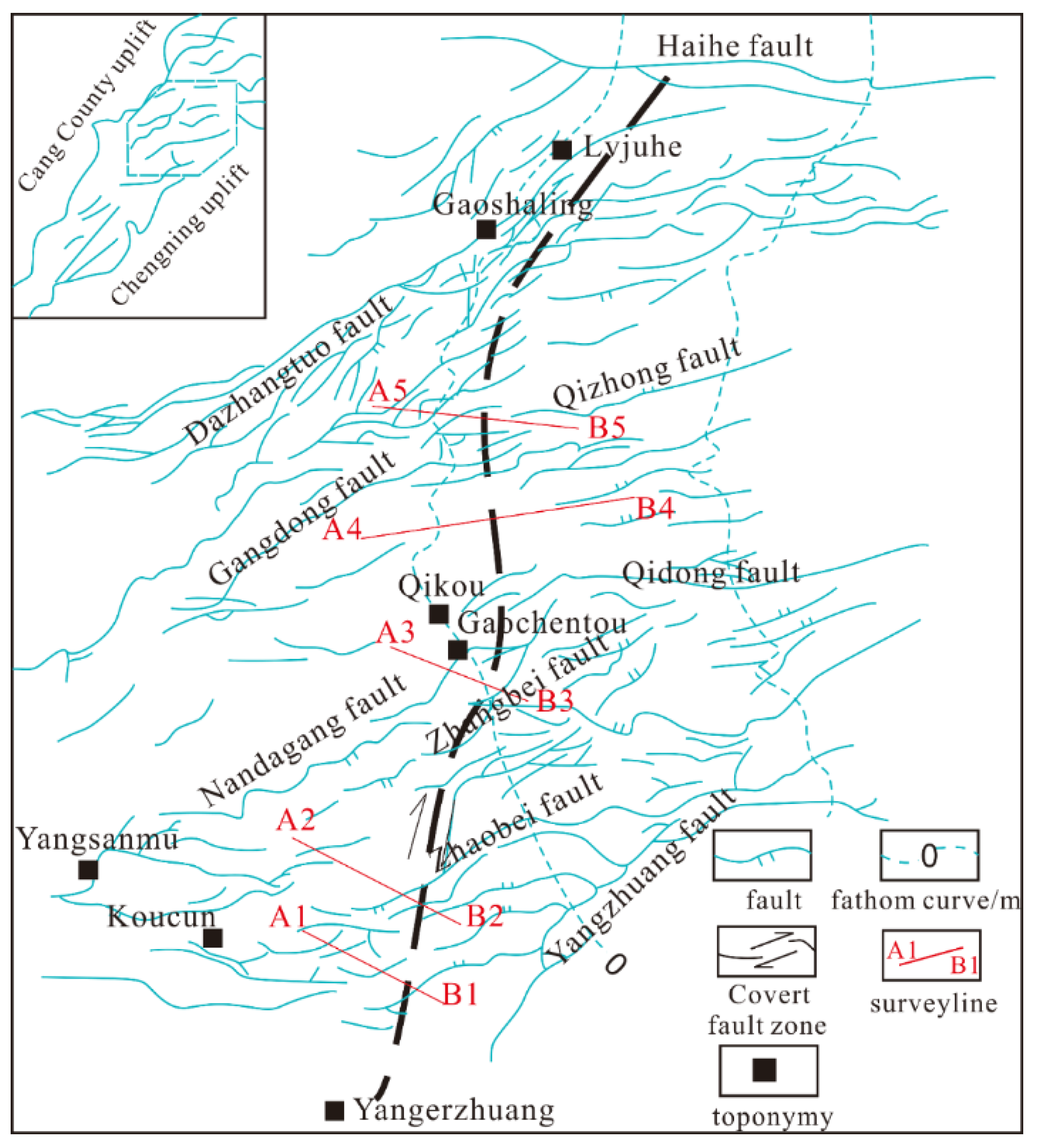
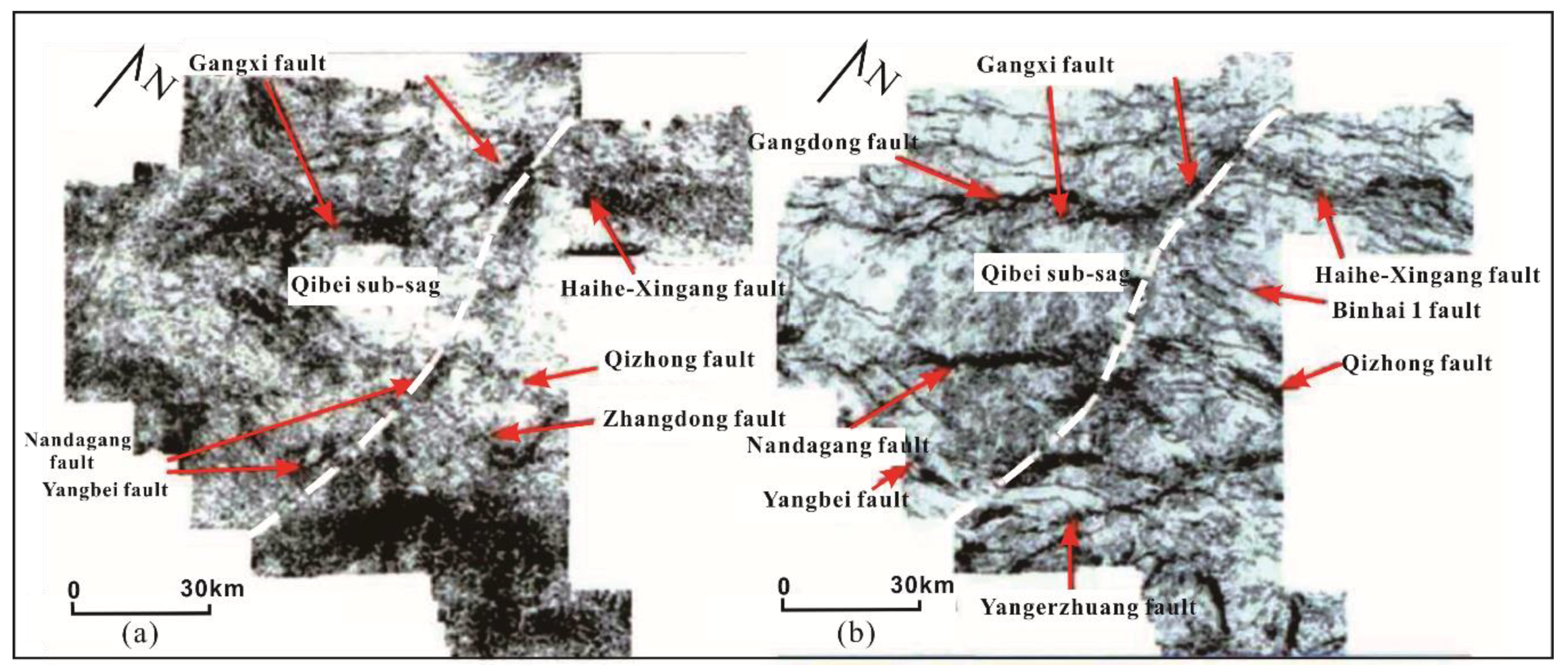
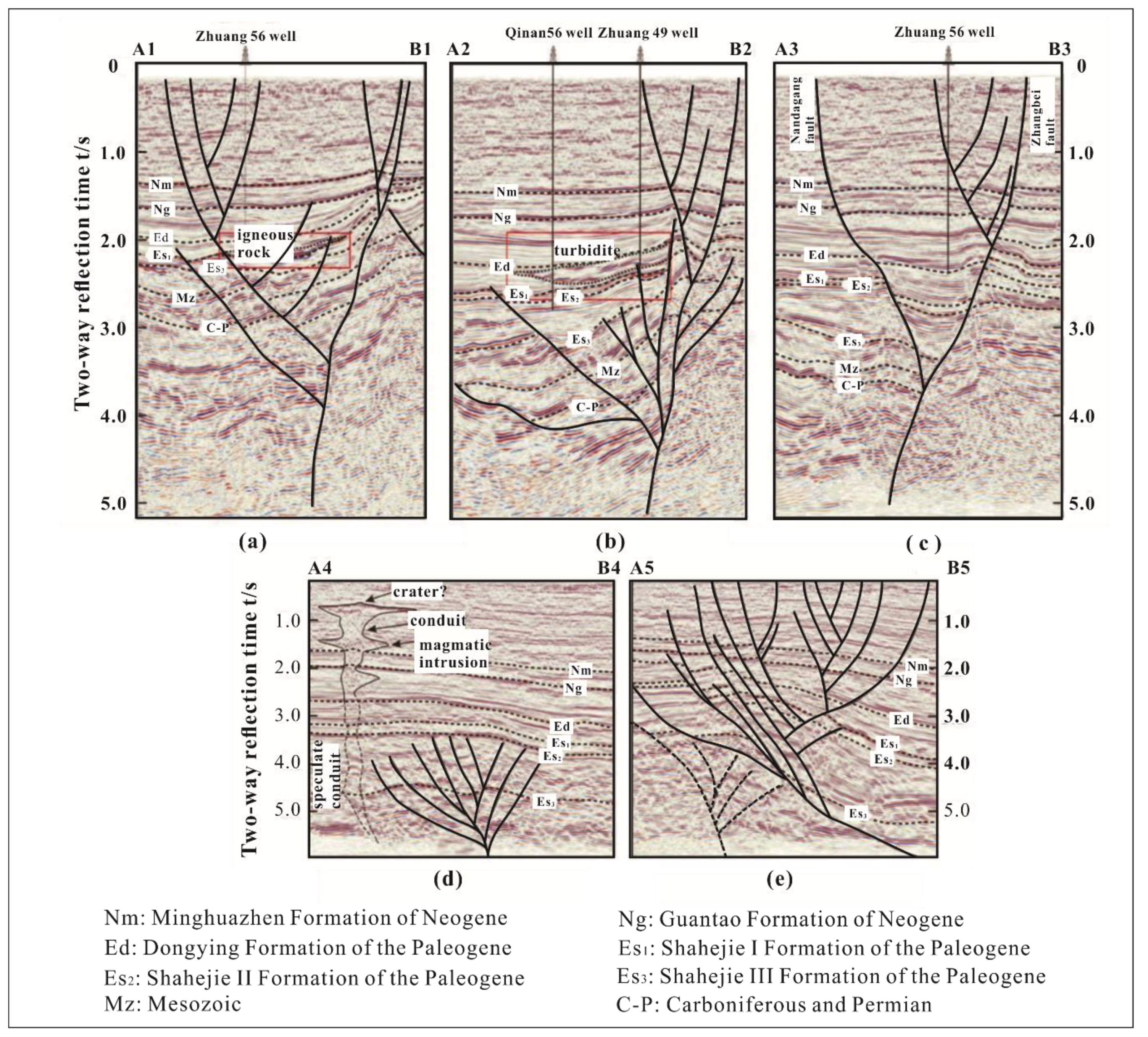
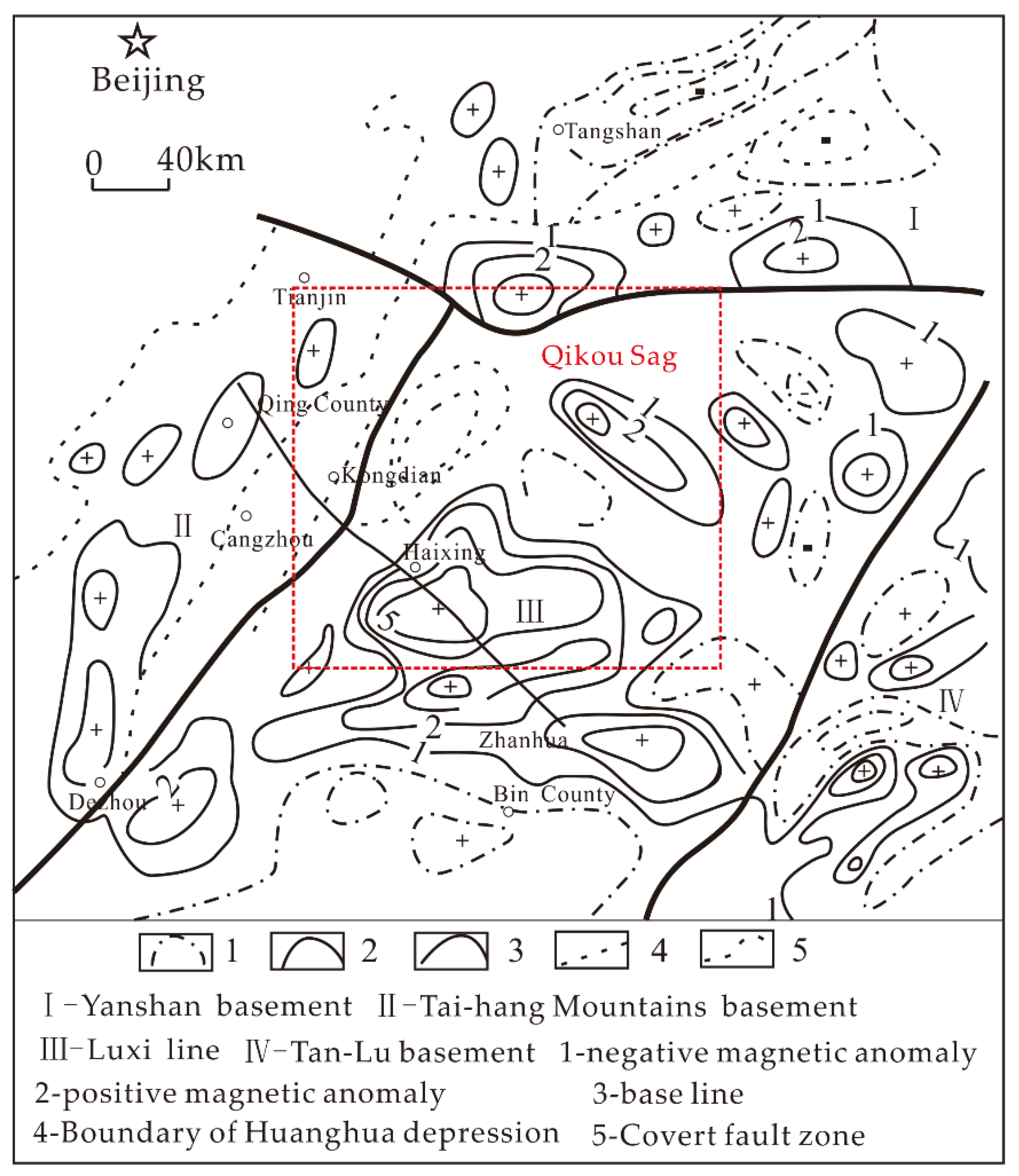
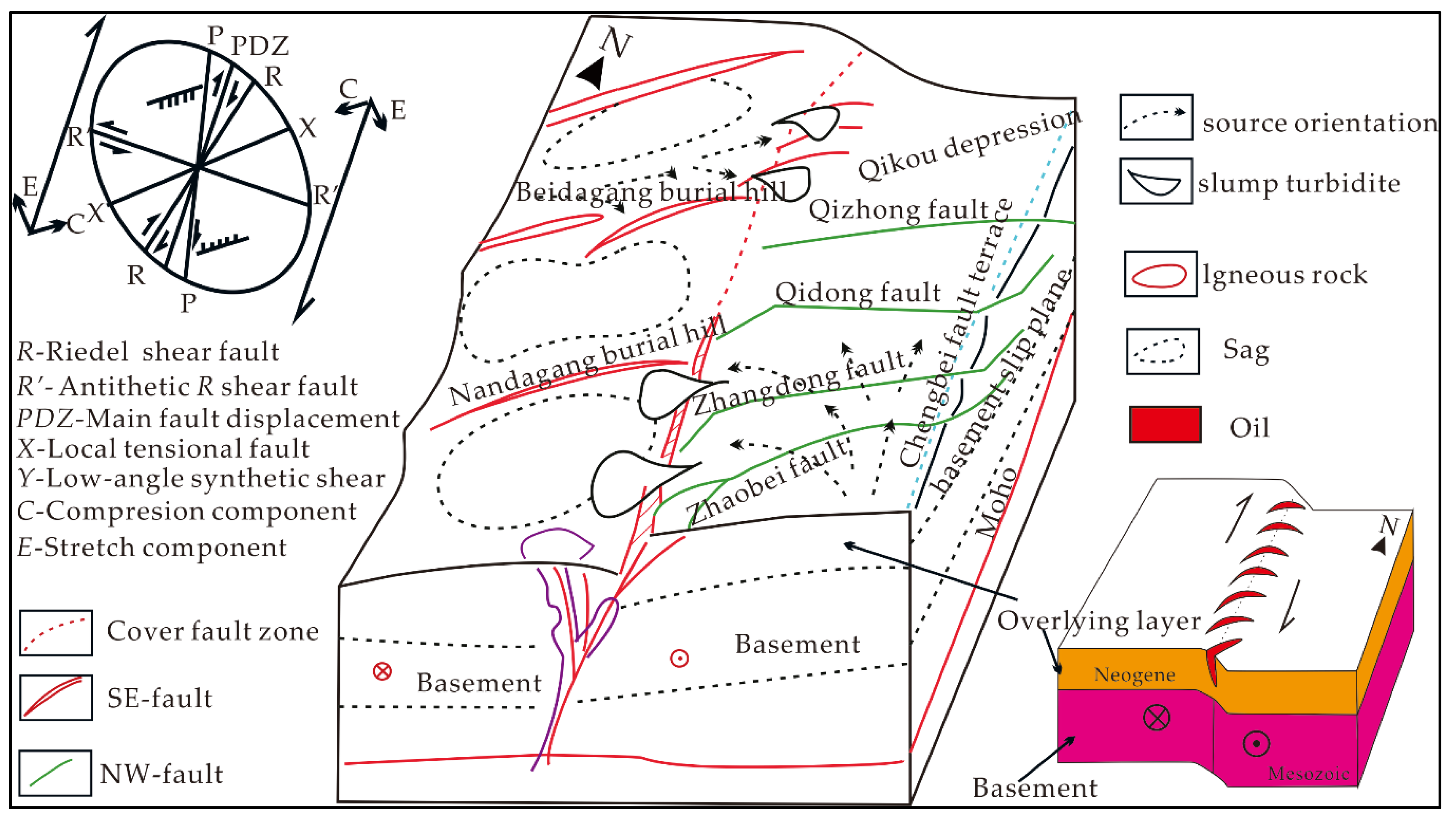
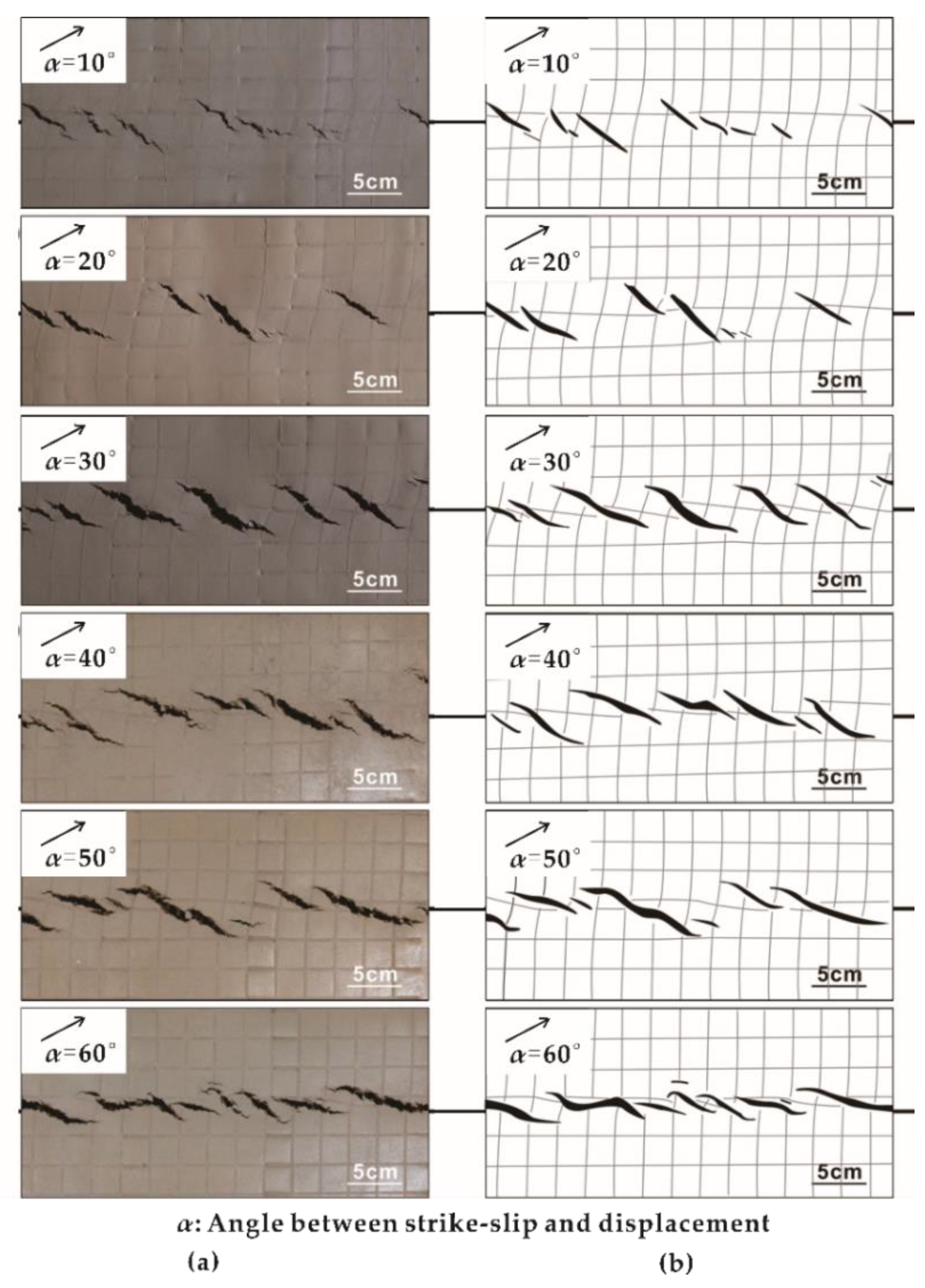
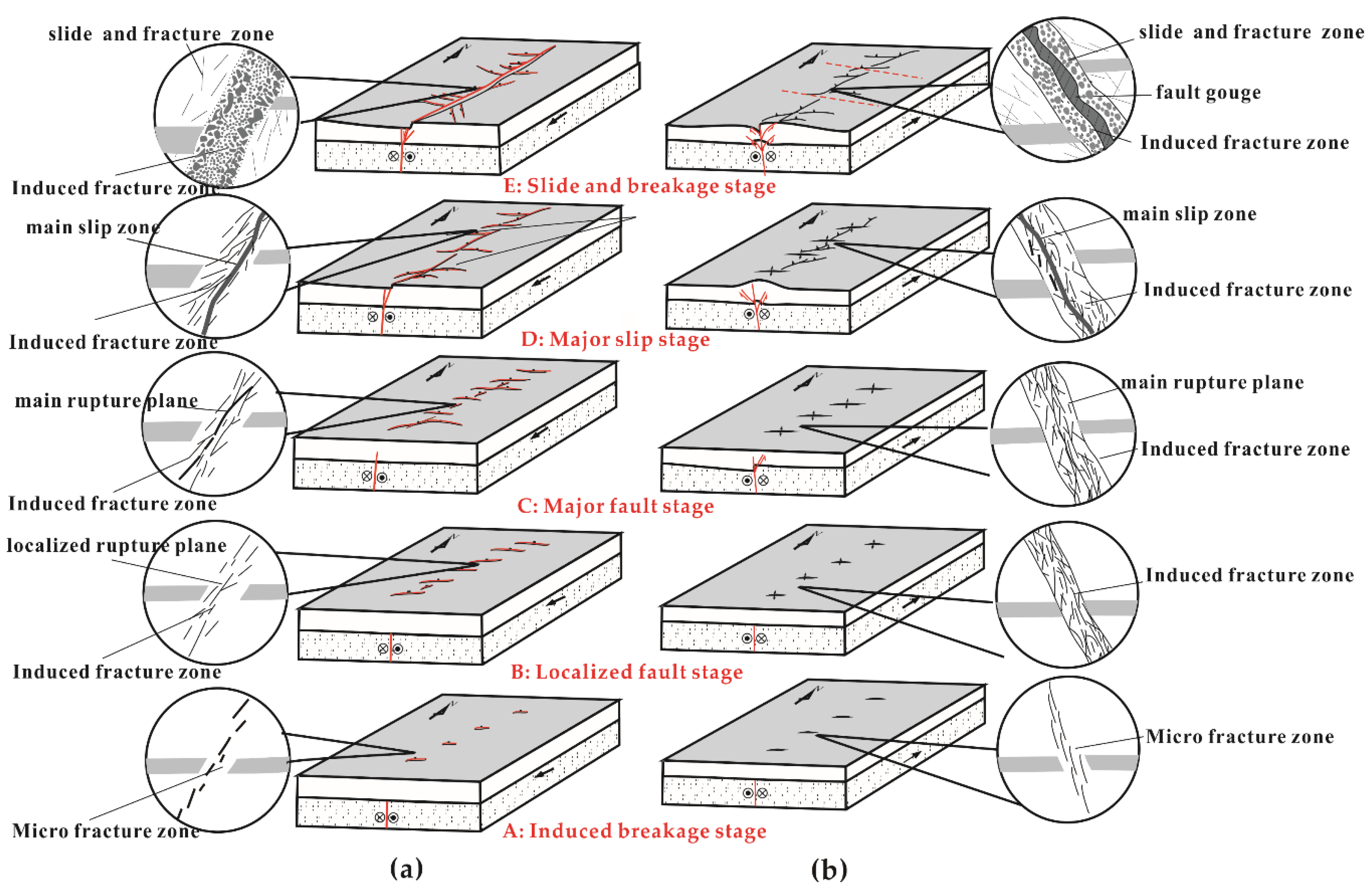
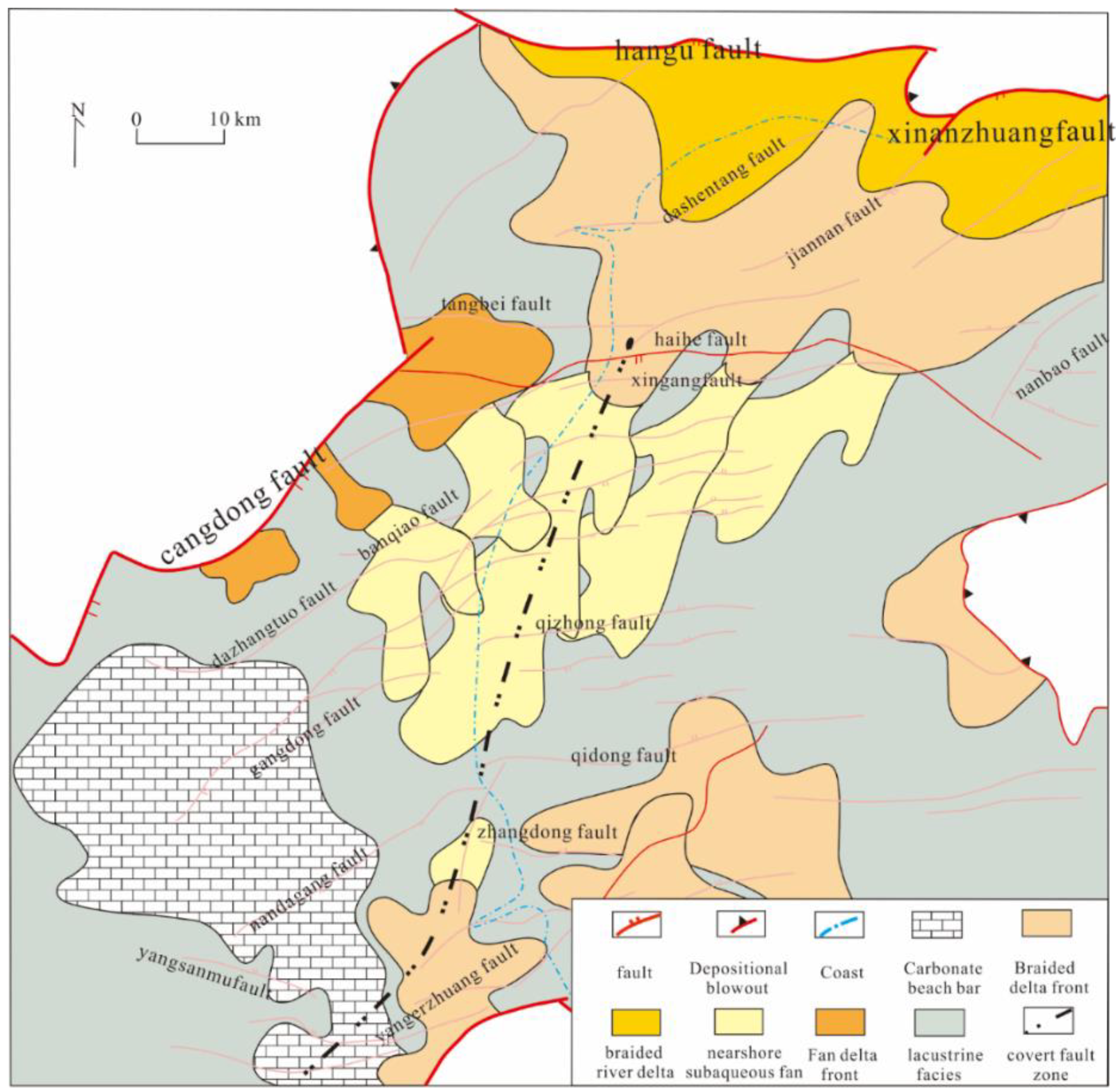
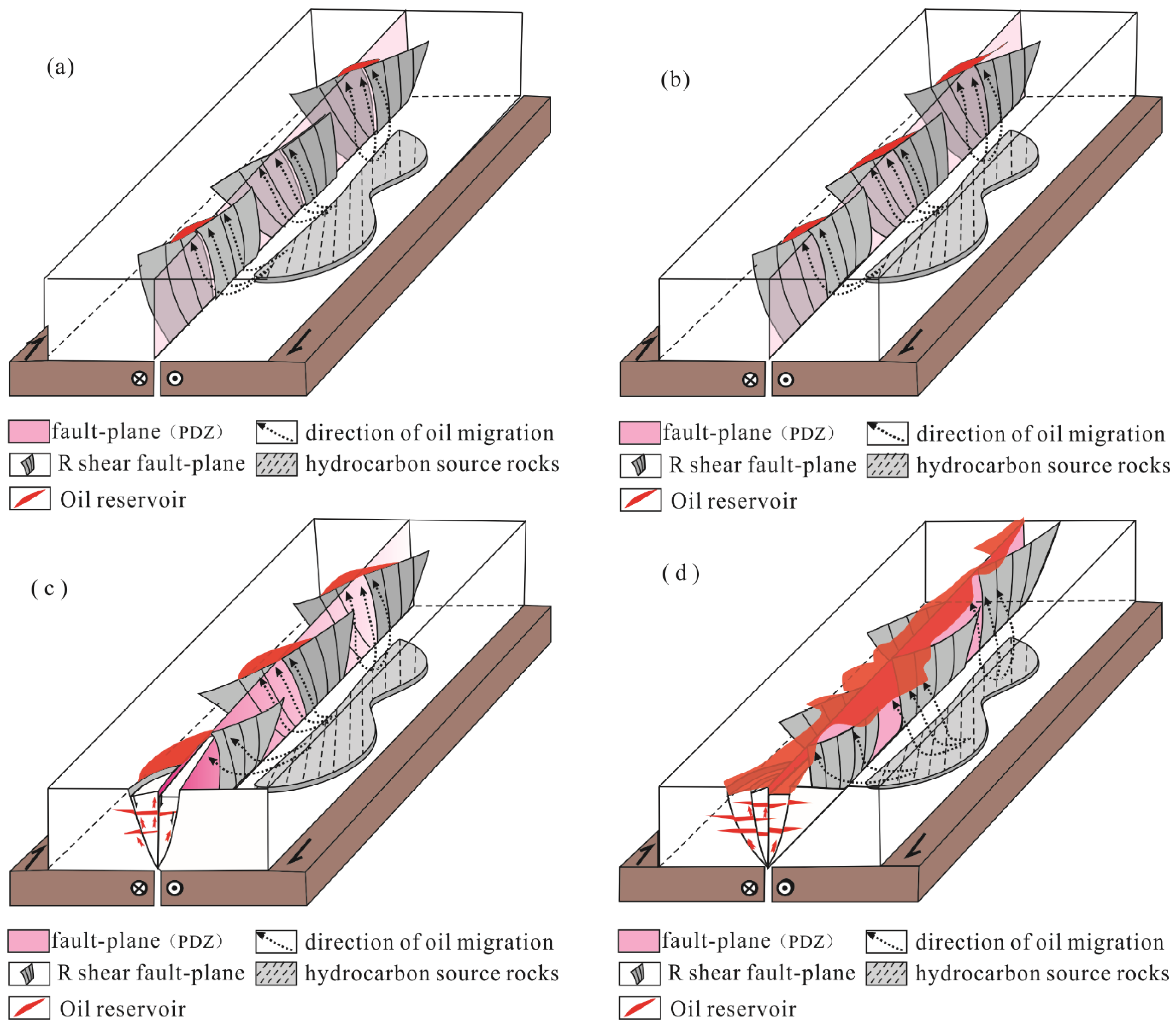
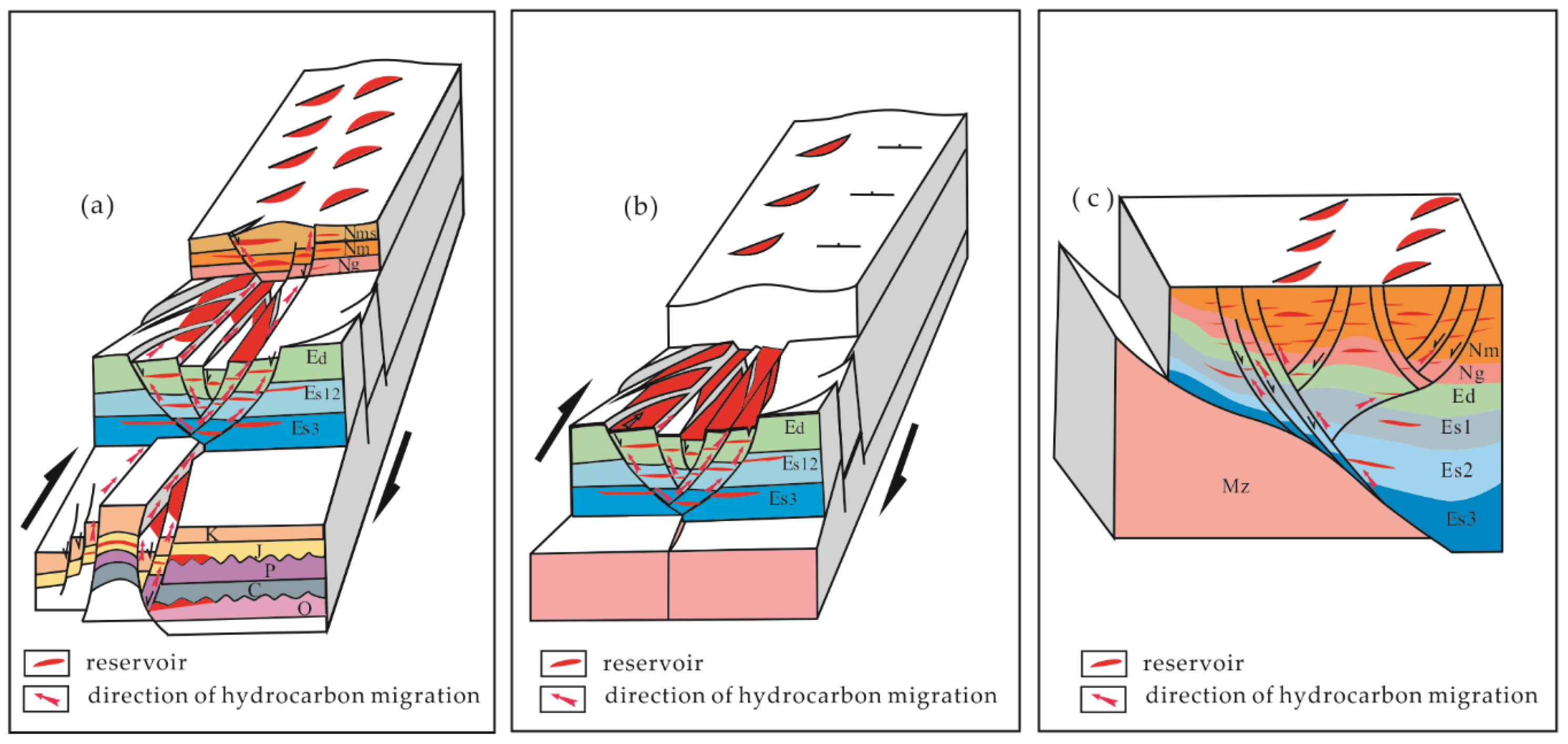
| Stage | Time Sequence | Deformation Strength (cm) | Oil Filling Level (mL) | Cumulative Time (min) | Trap Filled Area (%) |
|---|---|---|---|---|---|
| A | Early | 1.56 | 12 | 3 | 20 |
| B | Early-to-mid | 3.76 | 20 | 7 | 55 |
| C | Middle | 7.32 | 24 | 9 | 75 |
| D/E | End | 11.6 | 24 | 10 | 90 |
© 2018 by the authors. Licensee MDPI, Basel, Switzerland. This article is an open access article distributed under the terms and conditions of the Creative Commons Attribution (CC BY) license (http://creativecommons.org/licenses/by/4.0/).
Share and Cite
Jiang, S.; Wang, W.; Zhang, A.; Zhou, W. Genetic Mechanism and Evolution of the Covert Fault Zone and Its Oil-Controlling Mode in Qikou Sag, Eastern China. Energies 2019, 12, 98. https://doi.org/10.3390/en12010098
Jiang S, Wang W, Zhang A, Zhou W. Genetic Mechanism and Evolution of the Covert Fault Zone and Its Oil-Controlling Mode in Qikou Sag, Eastern China. Energies. 2019; 12(1):98. https://doi.org/10.3390/en12010098
Chicago/Turabian StyleJiang, Shuai, Weifeng Wang, Aizhu Zhang, and Weiwei Zhou. 2019. "Genetic Mechanism and Evolution of the Covert Fault Zone and Its Oil-Controlling Mode in Qikou Sag, Eastern China" Energies 12, no. 1: 98. https://doi.org/10.3390/en12010098
APA StyleJiang, S., Wang, W., Zhang, A., & Zhou, W. (2019). Genetic Mechanism and Evolution of the Covert Fault Zone and Its Oil-Controlling Mode in Qikou Sag, Eastern China. Energies, 12(1), 98. https://doi.org/10.3390/en12010098





